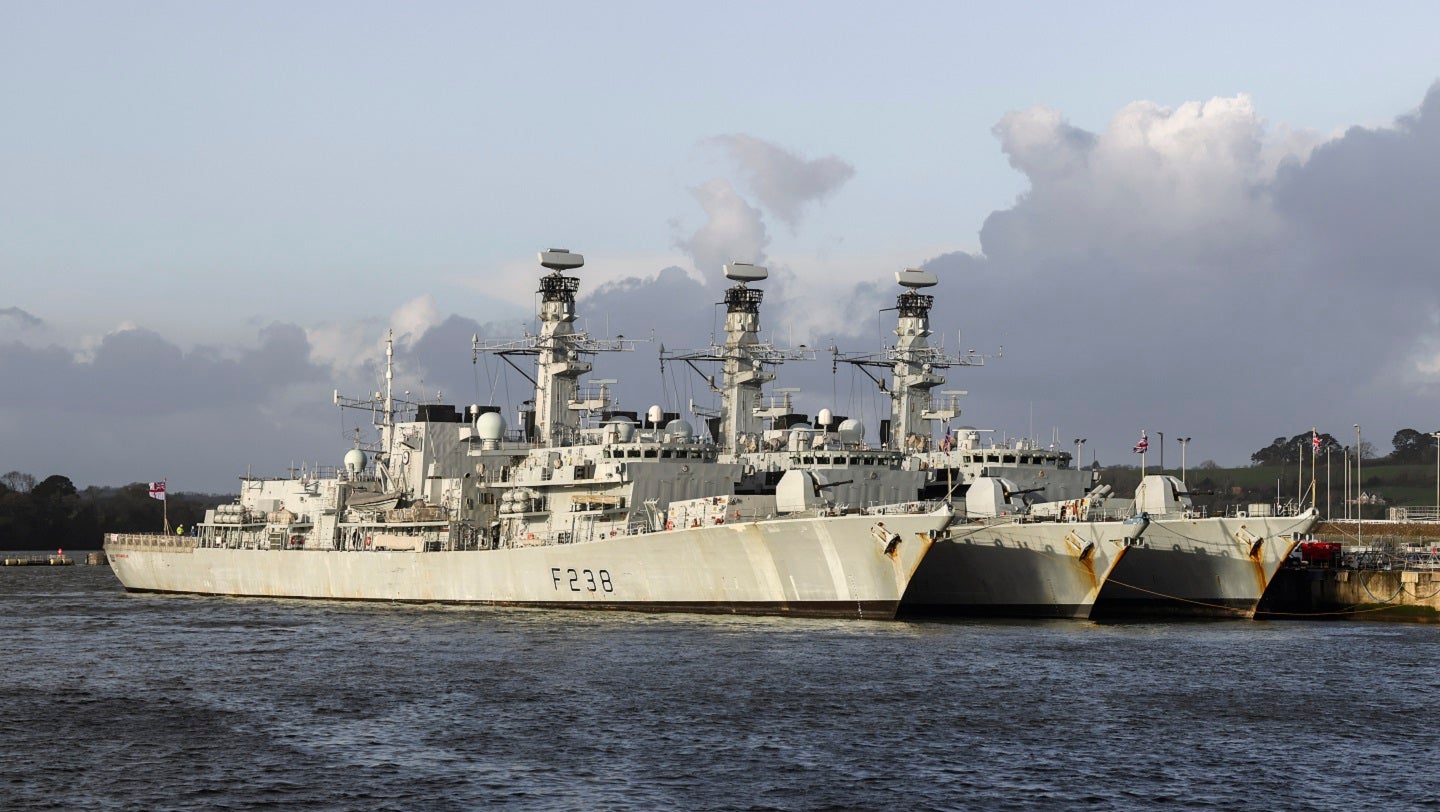
The UK Royal Navy’s battle to maintain a viable fleet of surface warships able to undertake necessary taskings sustained a further, albeit planned, hit on 17 April as the Type 23 frigate HMS Montrose was decommissioned after 30 years of service.
The step marks the second Type 23 decommissioned ahead of schedule, following the retirement of HMS Monmouth in 2021, which was planned to be retained in service until the 2026 timeframe. HMS Montrose was listed in official figures as having a planned out-of-service date (OSD) of 2027, meaning that it has had to come off the line four years ahead of schedule.
A magnifying factor of the retirement of the increasingly ageing Type 23 frigates is that the timeline for the replacement Type 31 frigates will see the first-in-class HMS Venturer enter service in 2027, by which time the fleet could be further reduced with the retirement of Type 23 frigates HMS Lancaster and HMS Iron Duke in 2024 and 2025 respectively.
Should these timelines remain, the UK Royal Navy’s surface fleet of major surface combatants, made up of the Type 23 frigates and Type 45 air defence destroyers, could be down to just 15 vessels. The current structure of the Royal Navy’s missions dictates a 19-strong surface warship requirement among the Type 23 and Type 45 classes.
According to the UK’s shipbuilding programme, five Type 31 Inspiration-class general-purpose frigates will be introduced into Royal Navy service from 2027, to replace outgoing general-purpose Type 23 frigates.
In addition, eight Type 26 frigates, currently under contract or in build, will begin to enter service between 2028 and 2035, which will replace the anti-submarine configured Type 23 vessels. On current planning, the timeline to replace the anti-submarine variants matches, meaning there should be no further reduction in Royal Navy surface combatants during this period.
A further class of warships, dubbed the Type 32, are thought to be being developed to act as multi-purpose motherships for uncrewed mine countermeasure vessels, to replace the remaining nine crewed minehunters of the Hunt and Sandown classes, and as of December 2022 planned to enter service over a period of three years commencing in 2032. However, the class is still in its concept phase and timelines likely to shift in the years ahead.
In an attempt to offset the looming drop in surface combatant numbers, the Royal Navy is sending many of the remaining Type 23 frigates into service life-extension (LIFEX) programmes. Of the Type 23s in service, HMS Argyll underwent a LIFEX programme in 2022 in a bid to keep the vessel in the fleet until the 2027-2028 timeframe.
| Royal Navy Type 23 frigate | Planned OSD |
| HMS Argyll | 2023 (entered LIFEX in 2022) |
| HMS Lancaster | 2024 |
| HMS Iron Duke | 2025 (entered LIFEX in 2022) |
| HMS Monmouth | 2026 (actual 2021) |
| HMS Montrose | 2027 (actual 2023) |
| HMS Westminster | 2028 |
| HMS Northumberland | 2029 |
| HMS Richmond | 2030 |
| HMS Somerset | 2031 |
| HMS Sutherland | 2032 |
| HMS Kent | 2033 |
| HMS Portland | 2034 |
| HMS St Albans | 2035 |
In a series of Freedom of Information (FoI) requests made in late-2022 to the UK Ministry of Defence regarding the timelines for the departure of the Type 23 frigates and the introduction of the Type 31 and Type 26 replacements, Naval Technology was informed that while information did exist that outlined how the surface combatant fleet would be affected by the apparent slip in timelines, all details were being withheld up Section 26(1)(b) of the FoI Act.
Despite the accepted public interest, it was determined that providing the details of which Type 23 frigates would undergo a LIFEX programme to delay their departure from service and offset the dip in surface combatant numbers, revealing the Royal Navy’s forward planning could be exploited by adversaries.
However, it is understood that the out-of-service date of warships can be extended for a maximum of six years following the completion of each upkeep maintenance programme, in line with vessel class certification rules.




